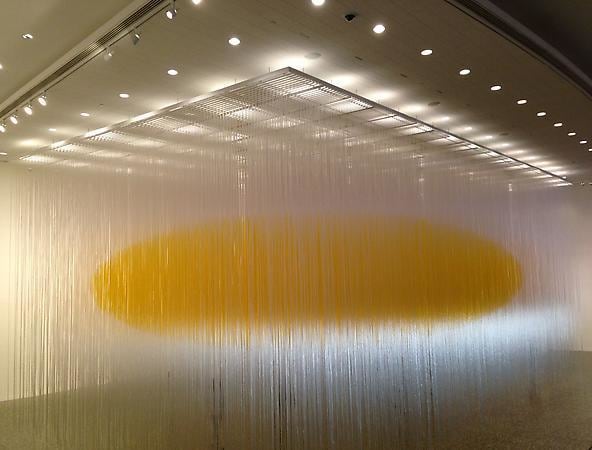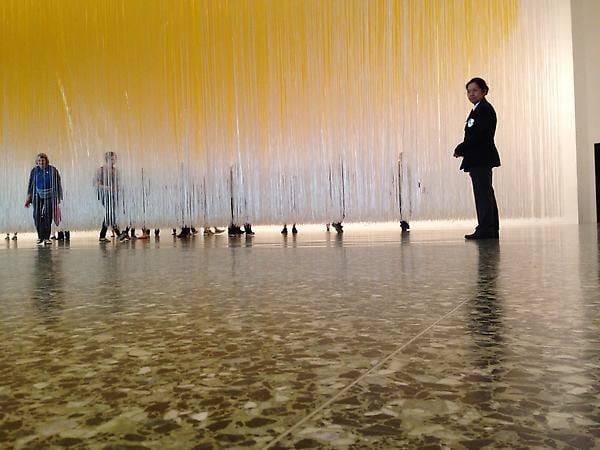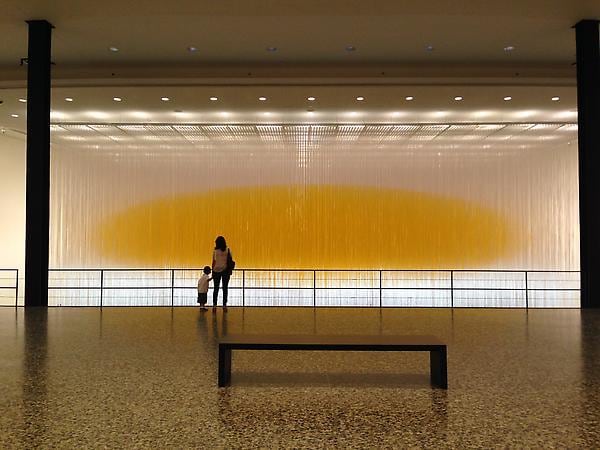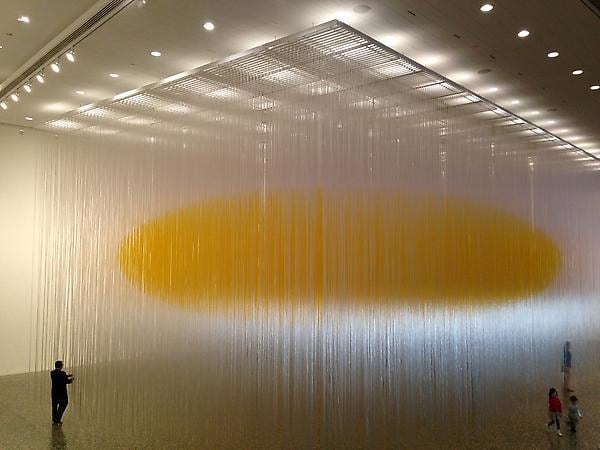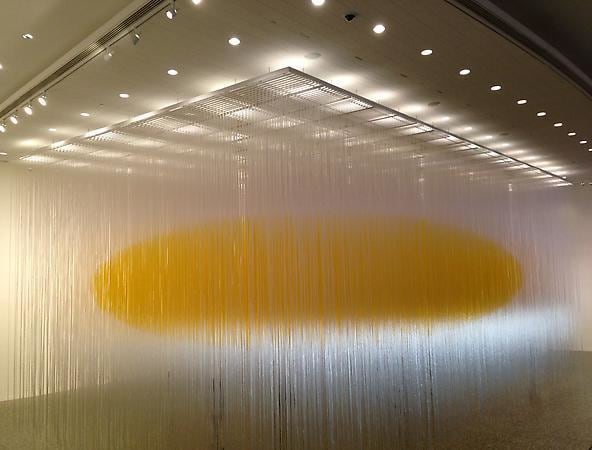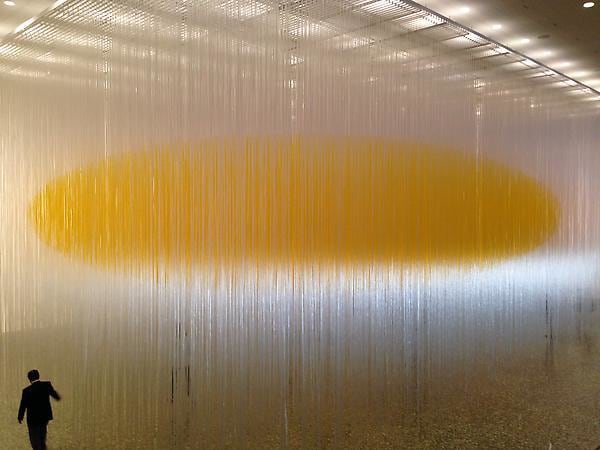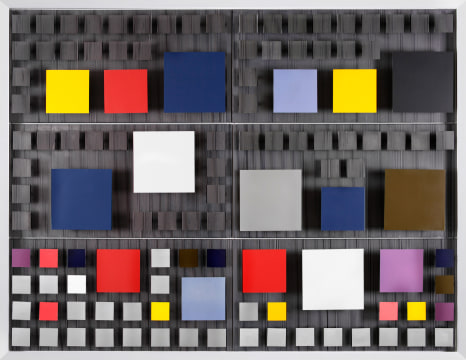
In May of 2014, The Museum of Fine Arts, Houston unveiled the final work of the Venezuelan maestro Jesús Rafael Soto. The Houston Penetrable is a rare example of an indoor Penetrable, and it is the only one Soto designed to be permanent or semipermanent.
One of the most important kinetic artists of the 20th century, Jesús Rafael Soto began his artistic career at a very young age, painting posters for movie theaters in his home town of Ciudad Bolívar. In 1942, he received a scholarship to study art and art history at the Escuela de Artes Plásticas in Caracas, where he met fellow students Carlos Cruz-Diez, Mercedes Pardo, Omar Carreño, and Alejandro Otero. In 1950, Soto moved to Paris. Surrounded by the dynamic Parisian milieu, he began to consider ways to move his work from two-dimensions to three, how to engage the viewer in the experience of the work, and how to incorporate the perception of movement into his art. In 1952, he collaborated with Otero, Alexander Calder, Fernand Léger, Antoine Pevsner, Henri Laurens, Jean (Hans) Arp, and others in the Proyecto de Integración de las Artes at the Universidad Central de Venezuela, headed by architect Carlos Raúl Villanueva. The project integrated the art of avant-garde modernists with the university's architecture, and it is a signature project of mid-century modernism in Latin America.
By the 1960s, Soto was immersed in projects in which he explored vibrations created by line and its dematerialization (through the inclusion of hanging elements). Soto created his first Penetrable--an interactive metal and plastic structure through which the viewer moves--in 1967. In an interview in 1970, Soto said, “With penetrables, my most recent creations, this participation becomes tactile, even often auditory. Man interacts with his surroundings. Matter, time and space form a true trinity, and movement is the force which demonstrates the trinity.”
Commissioned by the MFAH in 2004, The Houston Penetrable took nearly a decade to produce. With the support of the MFAH and Atelier Soto, Paris, architect Paolo Carrozzino and producer Walter Pellevoisin have been at the helm of a team of artisans and ironworkers constructing the piece. The 24,000 PVC (polyvinyl chloride) tubes hang from the ceiling in the Museum's Cullinan Hall, creating a monumental two story-high installation of hand-painted and tied tubing which beckons the viewer to walk through it, touch it, and participate in the work.
The installation will be accompanied by an exhibition of eight pieces from the various phases and series of Soto's career, including his Plexiglas boxes, and selections from his Agujas (Needles), Ambivalencias (Ambivalences), and Vibraciones (Vibrations) series.
Soto’s Penetrables have been installed around the world, from the Museo Soto in Ciudad Bolívar, Venezuela, in 1973; to the rotunda of the Guggenheim Museum in 1974; to MALBA - Fundación Costantini in Buenos Aires in 2003; and the Los Angeles County Museum of Art (LACMA) in 2011. His work is included in numerous important collections, such as Tate Gallery, London, England; The Museum of Modern Art, New York; Solomon R. Guggenheim Museum, New York; Hirshhorn Museum and Sculpture Garden, Washington, DC; Musée National d'Art Moderne, Centre Georges Pompidou, Paris; The Museum of Fine Arts, Houston; Museum Nacional de Bellas Artes, Buenos Aires; Museu de Arte Contemporânea da Universidade de São Paulo, Brazil; Museo Nacional Centro de Arte Reina Sofía, Madrid; Tel Aviv Museum of Art, Israel; Museo Rufino Tamayo, Mexico City; Rijksmuseum Kröller-Müller, Otterlo, The Netherlands; Moderna Museet, Stockholm, Sweden; Kunstmuseum, Bern, Switzerland; and Museo de Bellas Artes, Caracas, among others.

